When choosing for relaxation or fitness options, you may wonder, “Is a swim spa a hot tub?” They might look similar, but they are different. Let’s explore how they compare, their uses, costs, and more.
What Is a Swim Spa?
A swim spa has special jets. These are powerful jets that make a strong current. A current is like a river flowing in one spot. This exercise current system lets you swim in place! You swim, but you don’t move forward. It’s great for exercise. It also has seats like a hot tub for relaxing. So, it’s for swim spa exercise features and hot tub relaxation benefits. Some swim spas have dual-zone temperature control. This means one part can be cool for swimming, and another part warm for relaxing, like two tubs in one! These are dual-purpose water systems. They offer aquatic fitness technology.
✅ Best for: Swimming, exercising, relaxing, or hydrotherapy.
You can check out high-quality swim spas from swimming spa exporters-SS466 or swimming spa distributors-SS467.
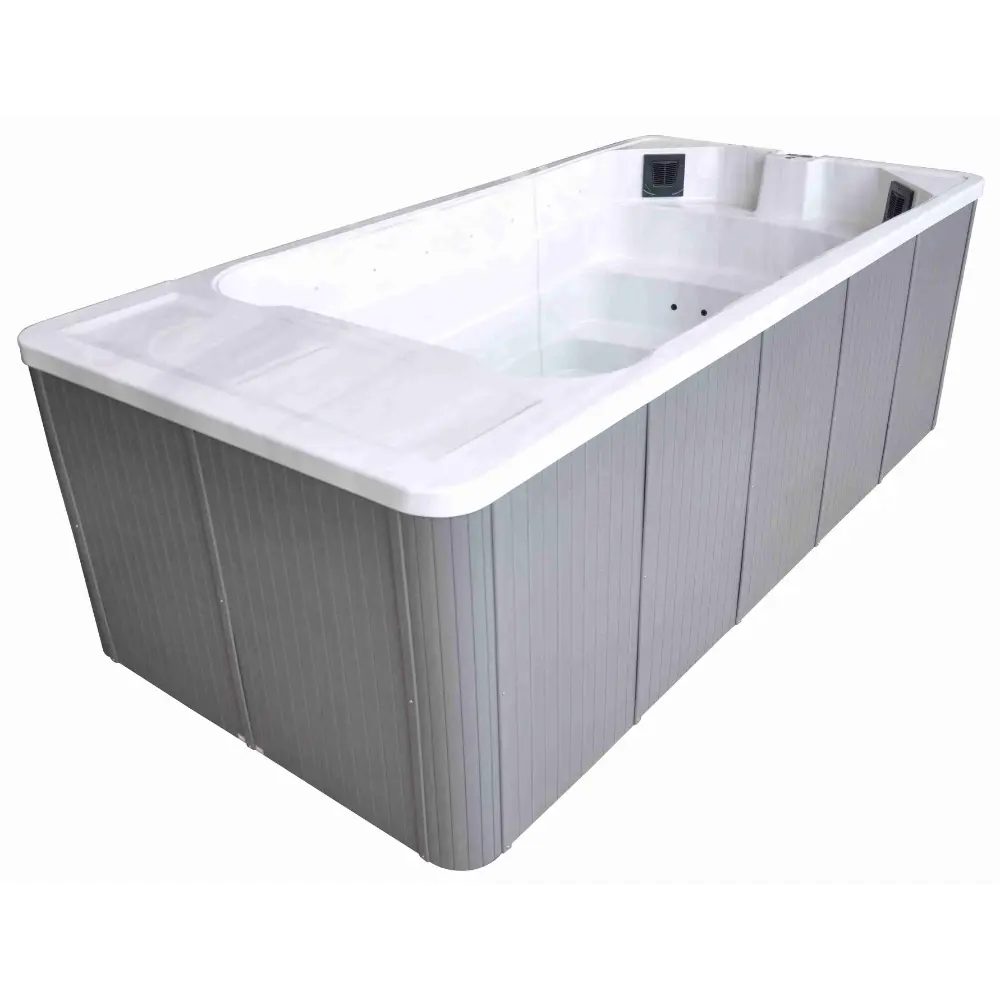
What Is a Hot Tub?
A hot tub is mostly for relaxing. Its jets are made for massage. They bubble and swirl to make your muscles feel good. This is called hydrotherapy. Hot tubs have comfy hot tub seating arrangements. They are great for hydrotherapy jets comparison because they focus on massage. They don’t have strong currents for swimming. They are built for hot tub social features – sitting and talking with friends or family. Many people use them for post-workout recovery.
✅ Best for: Soaking, relaxation, muscle recovery, and socializing.
Check out models like whirlpool hot tub suppliers-E210 for premium-quality hot tubs.
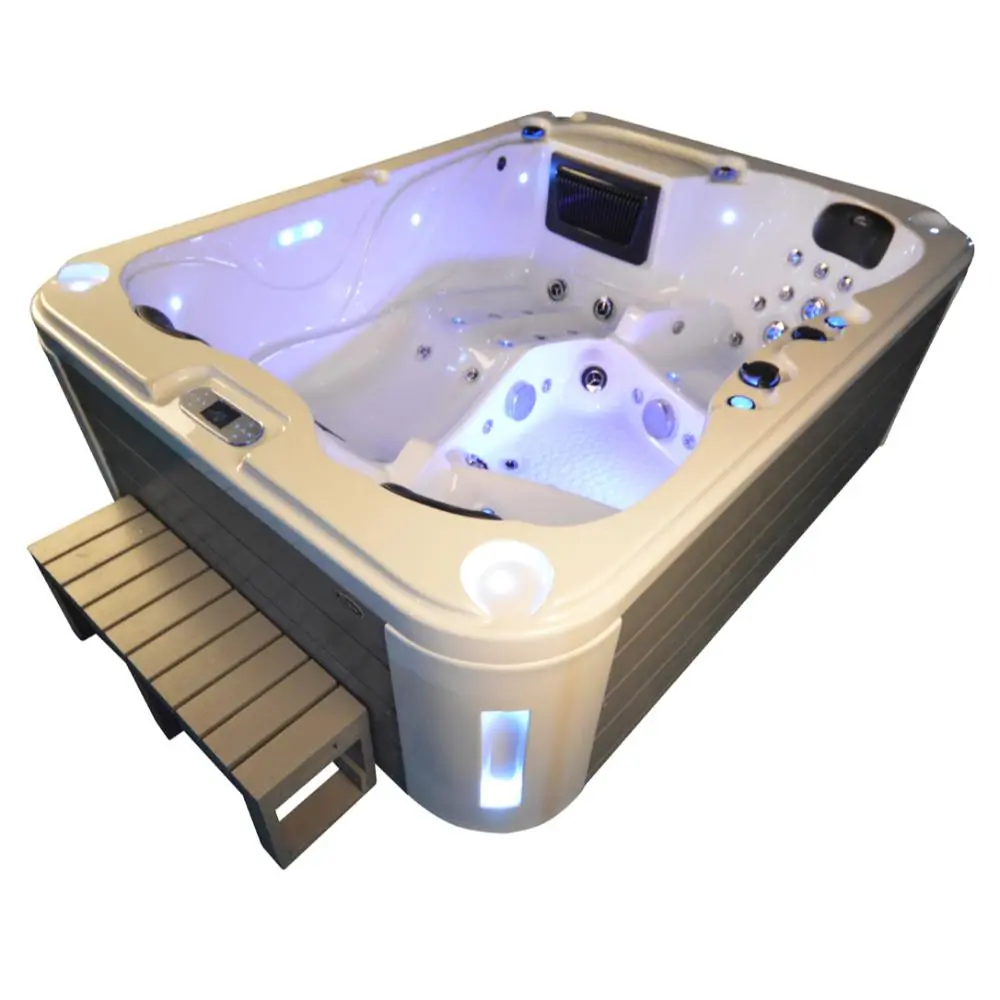
Differences Between Swim Spas and Hot Tubs
| Feature | Swim Spa | Hot Tub |
| Size | 12–21 ft long, 5–8 ft wide | 5–8 ft diameter |
| Purpose | Swimming, exercise, relaxation | Hydrotherapy, relaxation, socializing |
| Reference Cost Range | $7,000–$50,000 | $2,000–$30,000 |
| Monthly Cost | $200–$450 | $50–$150 |
| Setup Difficulty | Requires GFCI wiring and strong base | Simple plug-and-play setup |
| Best Use Cases | Fitness, swimming, hydrotherapy | Relaxation, therapy, small spaces |
| Lifespan | 10–20 years | 5–15 years |
Pros and Cons
Swim Spa Pros
- Versatility: It has the functions of swimming exercise and spa relaxation, and supports low-impact exercise (such as water shaping and joint protection), which is particularly suitable for arthritis or sports injury recovery.
- Space-saving: The volume is smaller than that of traditional swimming pools, suitable for small and medium-sized courtyards.
- Social and convenience: It is suitable for family gatherings or friends to socialize, saving the cost of commuting to the gym.
- Year-round use: Can be heated for winter use.
Swim Spa Cons
- High cost: The purchase cost is high, and the operating cost (such as heating and maintaining balance) is significantly increased, and chlorine odor, algae and other problems need to be dealt with regularly.
- Complex installation: Professional wiring (such as waterproof electrical system) and reinforced foundation are required, and maintenance requirements are strict (such as sensor adjustment, mildew prevention treatment).
Hot Tub Pros
- Affordable: Costs less than swim spas.
- Easy setup: Most models are plug-and-play, no complex construction is required, suitable for small spaces.
- Great for relaxation: Hot water combined with massage head can relieve stress, relieve anxiety, and promote lymphatic circulation.
Hot Tub Cons
- No swimming feature:Only for soaking and relaxation, no swimming or strenuous exercise.
- Less versatile: Not suitable for fitness needs, long-term use may cause cardiovascular load due to excessive water temperature.
Cost Comparison (2025 Data)
| Category | Swim Spa | Hot Tub |
| Price Range | $7,000–$50,000 | $2,000–$30,000 |
| Monthly Cost | $200–$450 | $50–$150 |
| Lifetime Cost | $2,500/year | $1,200/year |
| Home Value Impact | 9.7% resale value gain | 50% ROI on renovations |
Why Choose a Swim Spa?
- Fitness Enthusiasts: You can swim in place or exercise using resistance currents.
- Families: Dual-zone models offer hot tub relaxation and swimming for kids.
- Limited Space: Perfect for small yards where a full-size pool won’t fit.
Recommended Models:
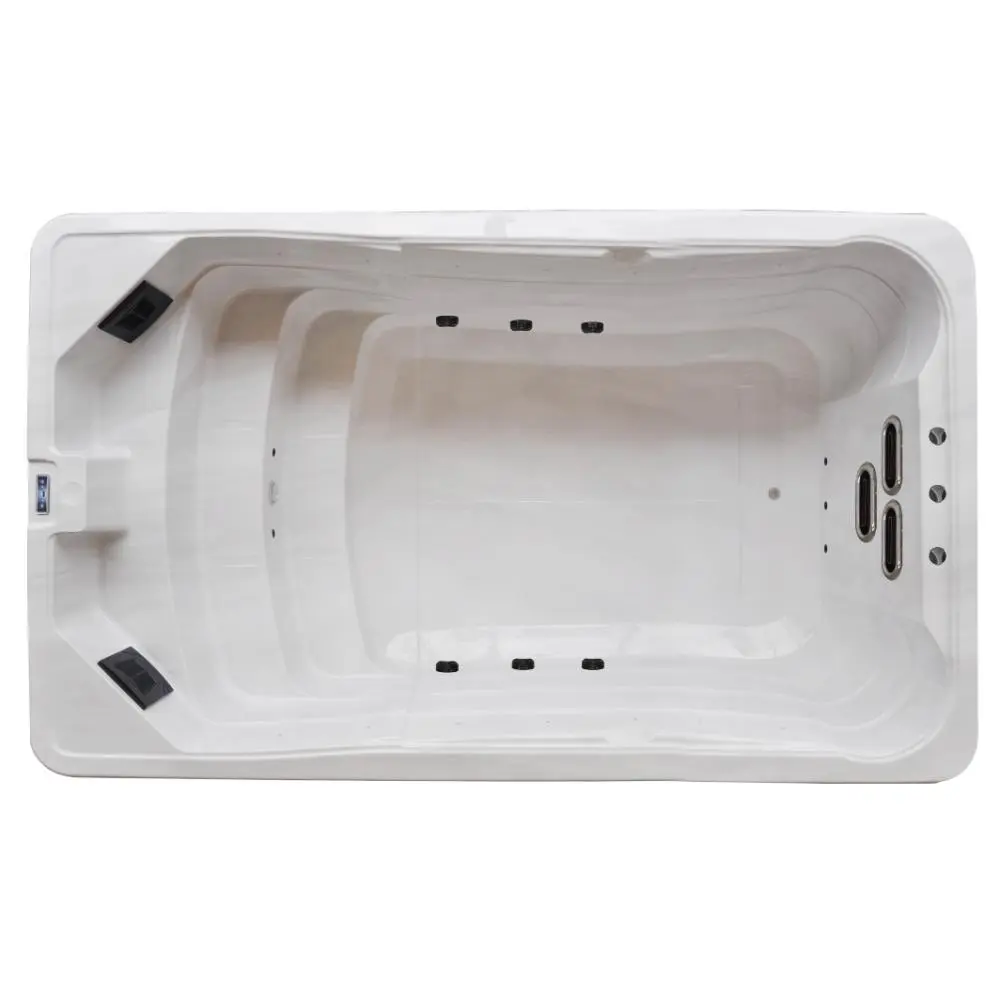
Why Choose a Hot Tub?
- Relaxation: Designed to ease muscle pain and stress.
- Compact Size: Fits on patios or small yards.
- Lower Cost: Affordable and efficient for personal hydrotherapy.
Recommended Models:
Massage bathtub exporter-HS152
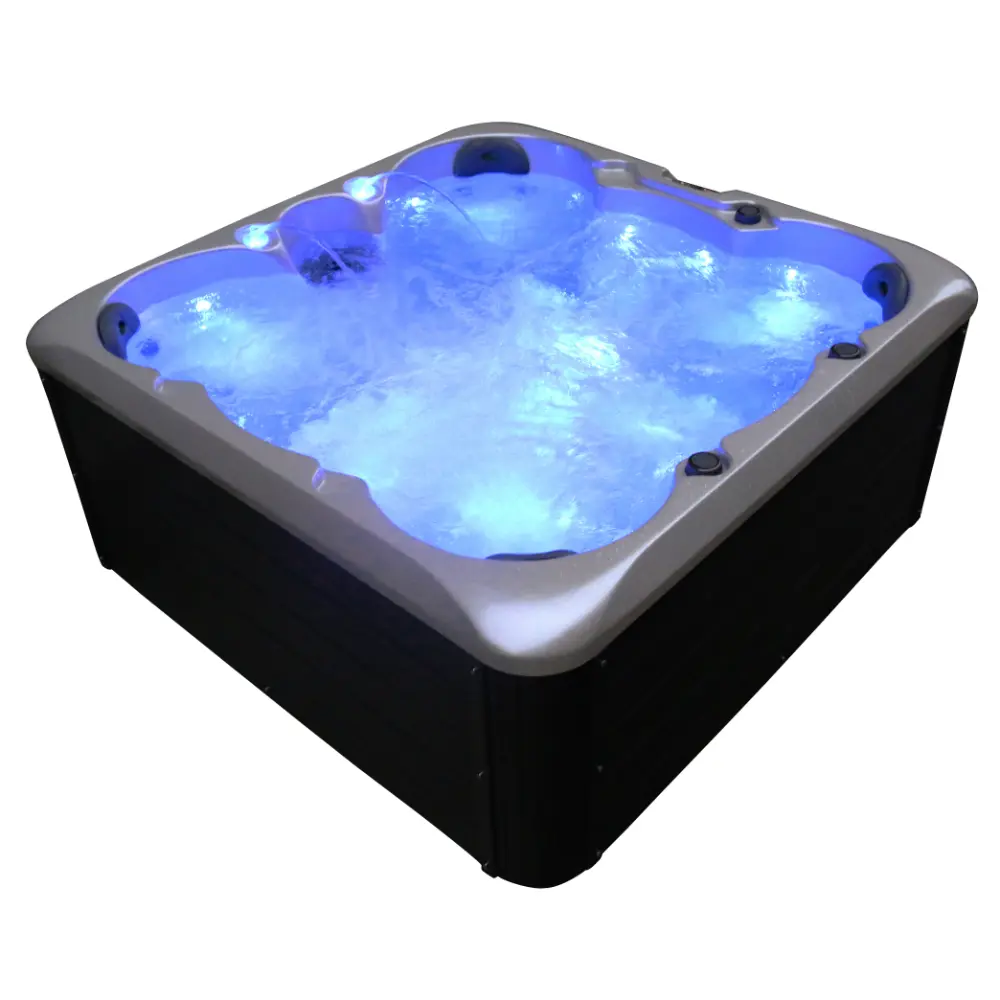
Can You Use a Swim Spa as a Hot Tub?
Yes, some swim spas have dual zones—one for swimming, one for relaxing. You can use the seating area just like a hot tub.
For versatile options, check swimming spa factories-SS585.
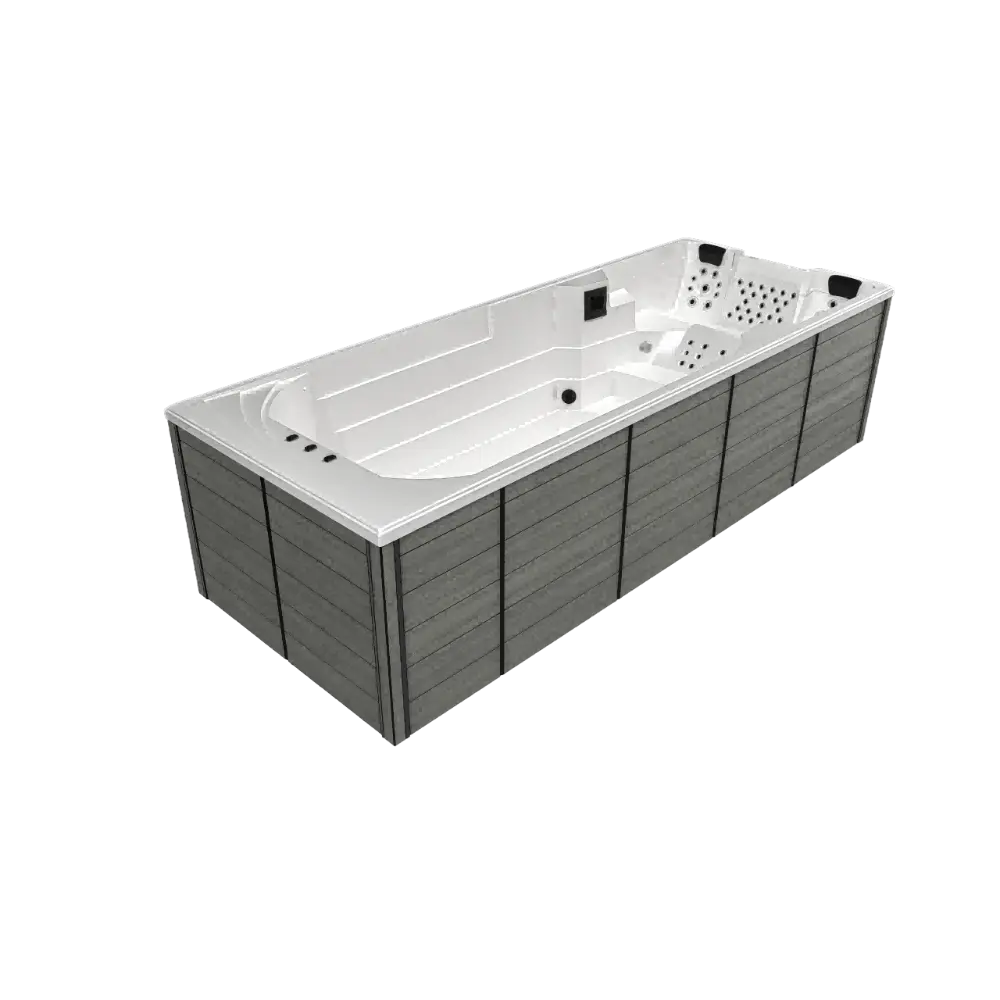
2025 Trends and Innovations
Dual-zone Systems: Newer models allow for both swimming and soaking.
Smart Controls: Adjust temperature and jet speed with an app.
Energy Efficiency: Improved insulation cuts down monthly costs.
FAQs
Can a swim spa replace a hot tub?
Yes, dual-zone swim spas provide both exercise and relaxation.
Are swim spas more expensive than hot tubs?
Yes, the initial cost and monthly expenses are higher.
How long do swim spas last?
With proper maintenance, 10–20 years.
Can you use a swim spa in winter?
Yes, insulated models are ideal for year-round use.
What’s the best model for swimming and relaxing?
Check out swimming spa exporters-SS466.
Conclusion
With the above guide, you now know the differences between a swim spa and a hot tub.
- Choose a swimming spa: Suitable for concentrated exercise, rehabilitation treatment, and social activities, but requires a sufficient budget and can afford complexity.
- Choose a hot tub: Suitable for relaxation for small families, give priority to acrylic or smart temperature control models to balance cost and experience.
- Special needs: Pregnant women, cardiovascular patients, etc.;strictly control water temperature (≤100°F) and long use time.
Explore more options at Veritasolus.
